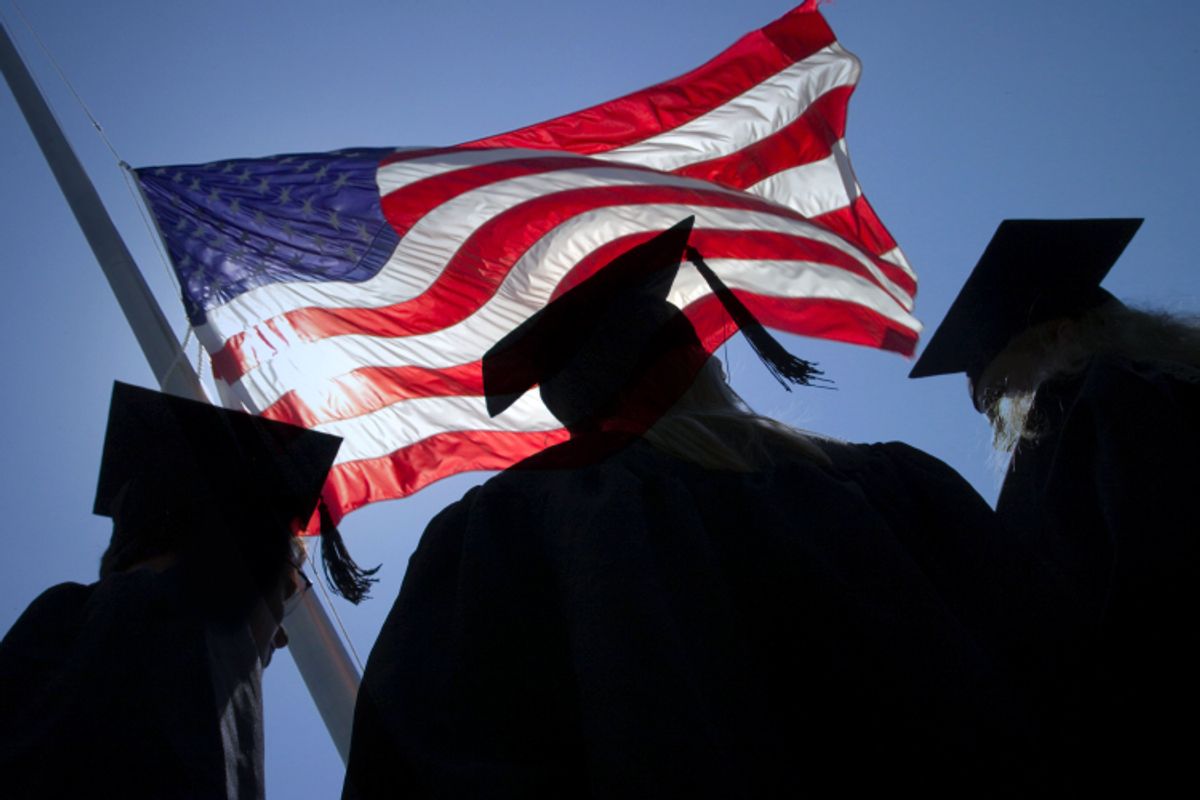The problems with student loans that are crippling a generation of young Americans may be well-documented. But when it comes to solutions, the conversation has been strikingly narrow, failing to explore the superior systems of other nations – and whether we view education in entirely the wrong way here in America.
In Britain, students don’t begin paying off their loans until they find stable employment, and the cost is in proportion to their earnings. Australia similarly ties the cost of paying off the loan to the income of the graduate. In Denmark, education is considered a right by the people and an investment by the government, and is therefore free. Some students are even offered a stipend by the government to defray costs. Norway has a similar system of higher education, and in Sweden, students pay only a small fee.
In America? The university is considered a commodity, one that can easily be purchased by the wealthy, but not the poor. These approaches represent a fundamentally different cultural attitude: elsewhere, education is a public good, an investment or a right; in the U.S., it’s a privilege reserved for wealthy elites.
The Organization for Economic Cooperation and Development (OECD) measures the difference in test scores between children from a high socioeconomic background and a low socioeconomic background. In the U.S., the difference is 112 points. In other nations that index is much smaller: Denmark, 93 points; Finland, 62; Canada, 65; Norway, 77. Unequal primary education, combined with the high cost of college, means that while the U.S. has remained relatively high among college attainment rates (although it is surely falling), attainment rates for minorities are abysmal.
That’s how the U.S. can have both one of the best education systems and one of the worst education systems in the world; wealthy students have access to top-notch preschools, test prep, summer camps and summer schools and then a high-end university education, while poor students get left in the dust.
Public funding for tertiary (university) education and pre-school education in America is far below that of other OECD countries. In many countries, the government funds tertiary education almost entirely, but the average for public funding is about 70%. In the U.S. public funding amounts to only 40% of a student’s college education, with another 40% paid out of pocket.
Economists like Miles Corak have discovered that upward mobility is now lower in America than in a host of other European countries, among them, Denmark, Sweden, Canada, France, Germany, Norway and Finland. Is it, as George Carlin claimed, “called the American dream because you have to be asleep to believe it?” Could this be because of the extraordinary cost of college education in the U.S.?
What can we do? Lowering student loans below the rate paid by the big banks that destroyed the economy and the lives of millions Americans would be a good first step. But it’s also a band-aid.
Prior to college, we need to make our society more equal. Richard G. Wilkinson and Kate Pickett have found that more equal societies have higher education scores. We need government-funded day care and mandatory maternity leave. We need to integrate our schools, which are more race- and class-segregated now than in the 1970s. New research shows that the U.S. cities that have the most upward mobility have high spending per pupil and low rates of racial segregation. That will mean more busing programs and measures to actively integrate schools. Interestingly, some European countries have moved towards the more capitalistic model of education we have here in America. The result: “educational choice tends to intensify class segregation through the effects of different preferences and information costs.” If we want to really improve schools we have to strike at what is causing some of them to fail: poverty, prison and segregation.
Education must be treated as both an investment in the economy and in informed, intelligent and active citizens. Remember that the biggest boom in American innovation came after WWII, when millions of veterans attended college under the GI Bill. The American dream, as enshrined by James Truslow Adams, was a place where “each man and each woman shall be able to attain to the fullest stature of which they are innately capable, and be recognized by others for what they are, regardless of the fortuitous circumstances of birth or position.”
Many, like Charles Murray, believe that these policies are overly romantic, that education should be a commodity and the best education should be saved for the super-bright. He thinks poor students are failing because, well, they just aren’t as smart as rich kids, not because they haven’t had the same opportunities.
But, as Stephen Jay Gould once noted, “I am, somehow, less interested in the weight and convolutions of Einstein’s brain than in the near certainty that people of equal talent have lived and died in cotton fields and sweatshops.” Could the next Einstein be dissuaded from college because of America’s flawed education system?



Shares